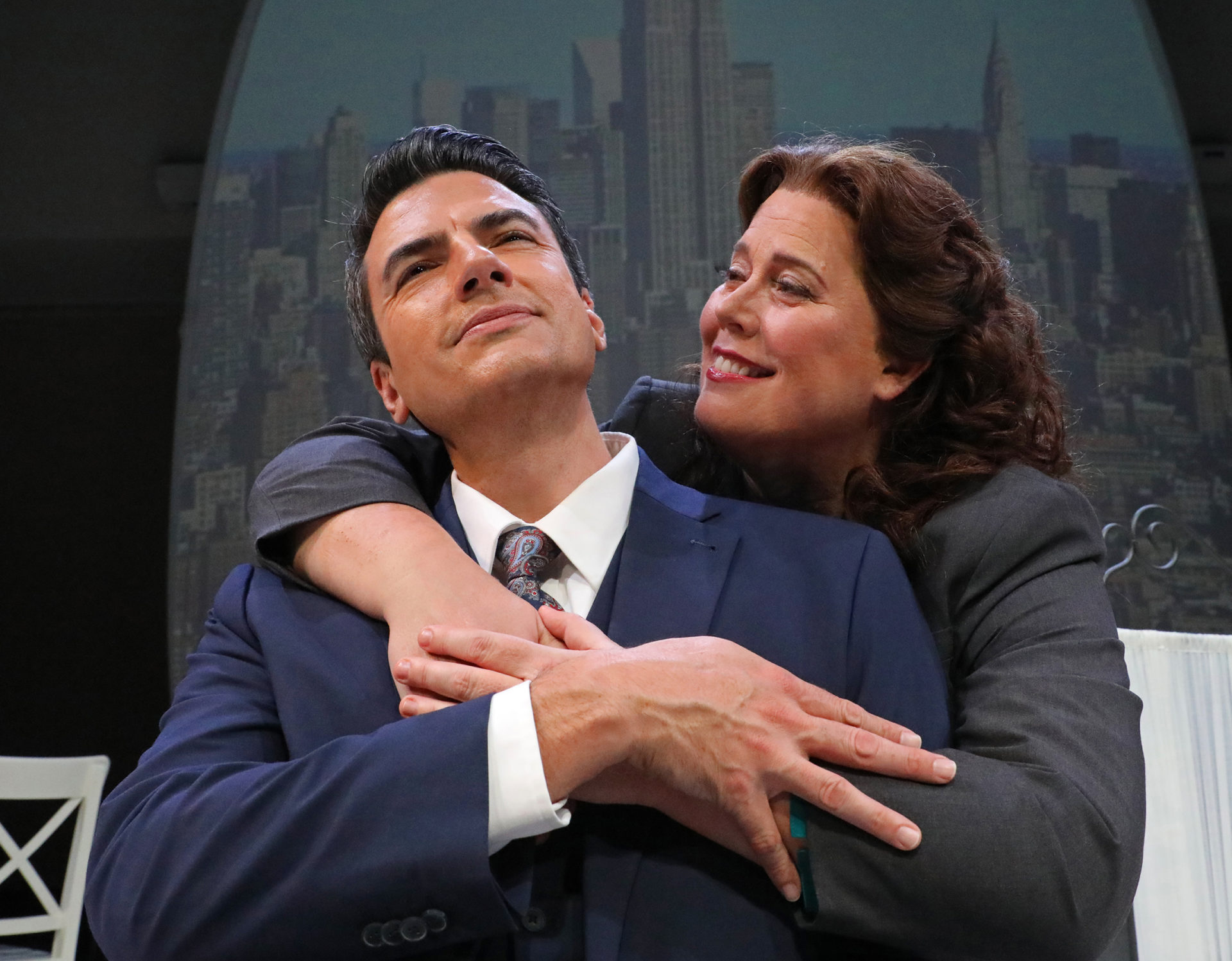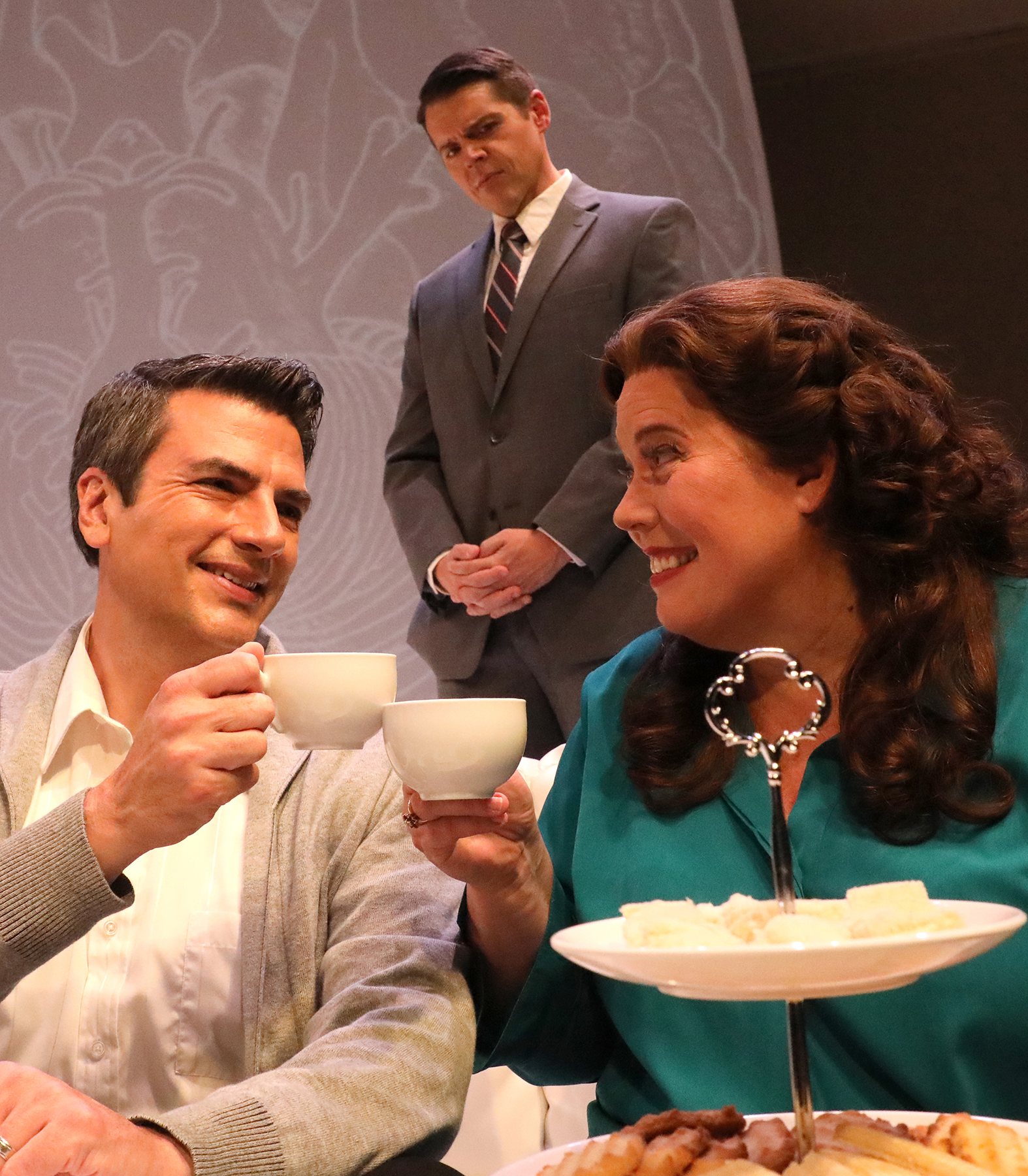A Tragic Ambush at the Noah Liff:
The Man Who Mistook His Wife for a Hat
As far back as the antiquity of Plato, Western culture has sought a rational explanation for the power that music has over us. As a rational pursuit this is pure folly to be sure, and with time, these efforts always tend to reveal more about the biases and beliefs (both negative and positive) of the researcher than they do about our species’ aesthetic relationship with its arts. The most recent efforts in this search were on display in Nashville Opera’s production of Michael Nyman’s chamber opera The Man Who Mistook His Wife for a Hat which is adapted by Christopher Rawlence from a case study by Oliver Sacks, a British neurologist and author of a number of bestselling books.
Plato’s classical premise, later echoed by St. Augustine, is what was known as the “ethos doctrine” of an almost physical and mechanically causal relationship between music and thoughts/feelings. Humanist Italian thinkers of the Renaissance like Marsilio Ficino, or Franchino Gafori, would connect the organization of the spheres with the theory of music and then connect it to the human spirit (as an intermediary between soul and body). Martin Luther saw music as a gift from, and a way to please, God, and in so doing to spread “…abroad and set in motion the [“reemerged”] holy Gospel,” that is, music is a path to salvation if used correctly. Increasingly, in the field of music theory, we are recognizing the intentional, nationalist, German ethnocentrism behind the work of Heinrich Schenker (before long the field will recognize a similar bias in the work of Gottfried Weber and/or Hugo Riemann). These were German 19th century theorists who sought to explain the success of a very small canon of classical music emerging from one specific place and time. This recognition emerges even as their theories themselves drift further and further into the hazy depths of the Academy’s ivory towers. Historical musicology is certainly not innocent of a similar bias.

More recently, probably as part of the broader cultural embrace of them, STEM fields (Science, Technology, Engineering, and Mathematics) have emerged as a central, if not religious, component of the human experience in explaining life’s mysteries. Accordingly, there has been a focus on medicine and the brain in order to identify music’s power over the human condition. Neuroscience in particular, has focused on studying the relationship between the brain and music. As an example, crooner Tony Bennett’s remarkable memory of music despite his advanced stage Alzheimer’s was given a prominent place in mainstream media. As Bennet’s neurologist has stated: “Music is housed in different parts of the brain, including parts of the brain that deal with emotion, and therefore, it’s easy to be moved by it when you hear it.” It is within this neurological determinism of music that The Man who Mistook His Wife for a Hat resides.
The opera, comprised of only three characters, tells the story of a professional singer, a Dr. P (bass Matthew Treviño) who suffers from visual agnosia, a neurological condition that leaves him unable to recognize faces and objects. His caring and somewhat overbearing wife Mrs. P (soprano Caroline Worra) occupies the dramatic space between her husband and the heroic neurologist Dr. S (tenor Tylor Nelson). The worlds of the two men are eloquently set up in musical style. The warm, tonal world of Dr. P is established when he sings Robert Schumann’s “Ich Grolle Nicht” from the Dichterliebe cycle, while the cold, rational, and scientific approach of Dr. S resides primarily in Nyman’s distinctive minimalism—a style somewhere between (and as a chamber opera, certainly lighter than…) the uncompromisingly optimistic ostinatos of Philip Glass and the postmodern collages of John Adams. While the two men occupy their own musical worlds, they can visit each other’s—Dr. S joins in the final refrain of “Ich Grolle Nicht” revealing his appreciation of his patient’s work, while Dr. P relies on the organized minimalist score in order to dress and function in society. Importantly and by intention, the minimalism in the score associated with Dr. S serves to deconstruct Dr. P’s romanticism.

In the performance, Nelson’s charismatic and concerned Dr. S was remarkable in his enlightened presence, and when he joined Dr. P for the final refrain of “Ich Grolle Nicht” the blended voices were splendid. Also, throughout the opera, Dr. S constantly reflects to himself (and thus reports to the audience) what Dr. P’s symptoms are revealing—a difficult trait of the role that Nelson excelled at. He embodied well the optimism (and hubris) of the modern medical establishment, even in light of his inability to properly diagnose Dr. P efficiently. His phrasing was deliberate and clean and his voice, when the score allowed, had a burnished brilliance.
Across the opera, it is slowly revealed that Dr. P, who appears handsome, charismatic and highly functioning at the outset, is only socially functioning because of his wife’s enabling attention. Her denial of his problem, and constant attention to his needs helped him to hide it from his colleagues and students. As the opera progresses and as the depth of Dr. P’s issues are revealed to the audience both in word and visually (for the examination, his neat, 3-piece suit is stripped from him at one point in a typically dehumanizing examination) and the denial that Mrs. P has built for herself too breaks down. As such, her character has the furthest arch, and Worra’s genius takes us right along on that journey. Her caring and buttoned-down demeaner soon reveals an anxiety that is heard in her brilliant vocal delivery, which eventually explodes in a forte scream “Philistine!” when Dr. S reaches past her denial to identify the problem.
Maestro Williamson dealt well with this stylistically diverse score and the costumes were subtle but marvelous. The lighting and the video onstage contributed to the production’s success. The blocking worked well visually, but unfortunately, the placement of the musicians behind the stage and screen led to an unbalanced sound. I spent much time on Spotify with the company’s wonderful recording from 2016, which made me miss the recording’s better blending. Good balance is perennially a challenge for chamber opera, and Nyman’s score calls for all instruments and voices to be amplified through a “quality Front of House sound system.” Perhaps that might have resolved the issue. Otherwise the performance was simply splendid.
As an opera, Nyman’s work powerfully reveals the modern bias for medicine as the explanation of music’s power, and in so doing it also exposes the problem with this singular focus. In his preface to the score, Nyman describes the overall musical organization as process, as the composition of a “harmonic identity which could be instinctively accepted as familiar at the outset yet which would, during the course of the opera, become increasingly “defamiliarized” by the removal of detail, contour, melody, color, texture, etc.” While the point of this is to express the gradual identification of Dr. P’s problem (the diagnosis), from Dr. P’s point of view, the defamiliarization actually serves to slowly strip him of his identity, and to objectify him for his disease (rather easily done given we don’t even have a name for him other than an initial—Dr. P).
This dehumanization and objectification, endemic to medicine and mental health, is akin to the way the sacrificial victim is treated in the dénouement of Stravinsky’s Sacre du Printemps. However, here the offending system is not a primitive Russian character or society, but instead that of the cold application of modern medicine. On the publisher’s website, the topic of the opera is given simply as “science;” and they were spot on. Nyman’s opera isn’t perfect, and to be honest, it felt very short. However, apart from those small issues of balance, the production and performance were fantastic—I left the theater troubled, which is the purpose of tragedy (a ruthless ambush considering the title made me think it was a comedy!). In the end, the importance of the production was not in its aesthetic, but in the relevance of its stark criticism of the medical industry. It might be worth pointing out that, even as it retains its identity as the Music City, Nashville is simultaneously being recognized as the region’s “Health Services Capital,” and as such this opera might just be the most important work to be performed here this season—bravo Nashville Opera!



